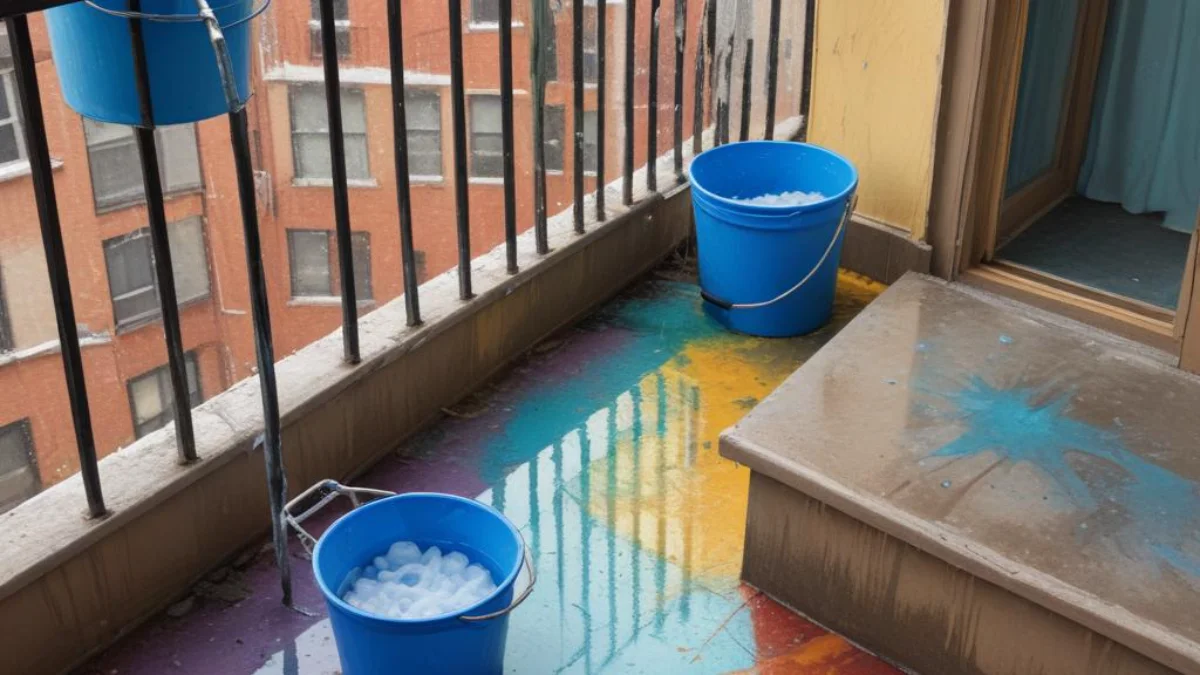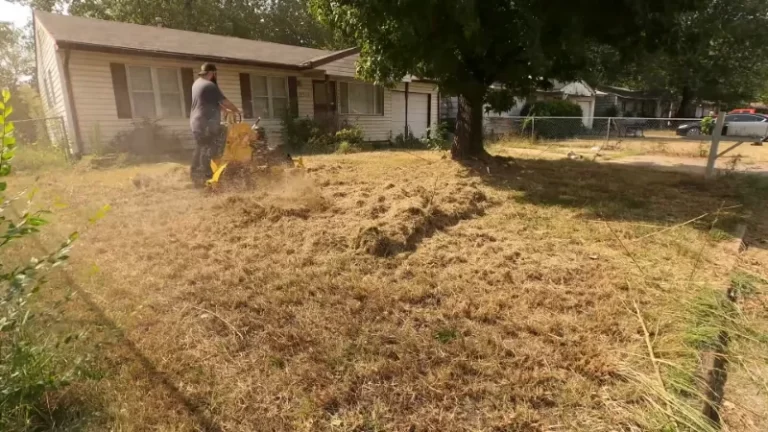How to Clean a 2nd Floor Balcony Without a Hose: A Pro’s Guide
Living with a second-floor balcony offers a private outdoor escape, but keeping it clean can feel like a major challenge. Without direct access to a water hose, removing dirt, grime, and bird droppings seems like an impossible task. Many apartment dwellers and condo owners simply give up, letting their valuable outdoor space become an unusable, dirty mess.
The core of the problem lies in logistics. How do you effectively wash away stubborn dirt and rinse the floor without flooding your neighbors below? This guide provides a comprehensive, step-by-step solution to this common problem, empowering you to reclaim your balcony and enjoy your outdoor oasis.
You'll Learn About
Understanding the Challenges of Second-Floor Balcony Cleaning
Cleaning an upper-level balcony presents unique obstacles compared to a ground-level patio. Understanding these challenges is the first step toward creating an effective cleaning plan. From water management to choosing the right tools, a little preparation goes a long way.
The Water Conundrum: No Hose, No Problem
The most significant hurdle is the lack of a readily available water source. Running a hose up from the ground floor is often impractical or prohibited by building rules. This limitation means you need alternative methods for applying water and rinsing surfaces effectively without causing a deluge.
Relying solely on a bucket and sponge can be incredibly time-consuming and often leaves a streaky, soapy residue behind. The key is to find a balance between using enough water to clean thoroughly and controlling the runoff to be a considerate neighbor.
Dealing with Debris and Grime
Balconies are magnets for all sorts of debris. Dust, pollen, leaves, and urban pollution accumulate quickly, creating a layer of grime. If you have plants, you’ll also contend with soil and water stains. Add in the occasional bird droppings, and you have a tough cleaning job on your hands.
This buildup isn’t just unsightly; it can also damage your balcony’s surface over time. Regular cleaning is essential maintenance, much like handling complex home projects such as removing dormers from a roof, to preserve the integrity and appearance of your space.
Considering Your Balcony’s Surface Material
Different balcony materials require different cleaning approaches. A concrete slab can handle more abrasive cleaning methods than a wooden deck or tiled floor. Using the wrong cleaner or tool can lead to permanent damage.
It’s crucial to identify your balcony’s flooring material before you begin. For instance, the considerations for maintaining a durable surface are quite different when comparing options like LifeProof vs. NuCore flooring indoors, and the same principle applies to your outdoor space.
Your Essential Toolkit for a Spotless Balcony
Having the right tools is non-negotiable for a successful balcony cleaning session. You don’t need expensive, specialized equipment. A few carefully chosen items will make the job faster, easier, and more effective.
The Core Cleaning Caddy
Start by assembling a basic cleaning kit. You will need a good quality, stiff-bristled brush with a long handle to save your back. Also, grab two buckets—one for your cleaning solution and one for rinse water—along with a sturdy dustpan, microfiber cloths, and protective gloves.
A handheld spray bottle is also invaluable for targeted cleaning and rinsing small areas. For tougher grime, a plastic scraper can be a useful addition to your arsenal.

Smart Water Solutions
Since you don’t have a hose, you need a better way to transport and apply water. A garden pressure sprayer is a game-changer. These inexpensive tools hold several gallons of water and allow you to apply a controlled, pressurized spray for both washing and rinsing.
Another excellent option is a portable power cleaner or a small, battery-powered pressure washer. These devices provide more cleaning power than a manual sprayer but are compact and don’t require a constant hose connection.
Step-by-Step Guide: How to Clean Your 2nd Floor Balcony
With your tools and a solid plan, you’re ready to tackle the cleaning process. Follow these steps for a sparkling clean balcony without upsetting your downstairs neighbors.
Step 1: Preparation is Key
First, completely clear your balcony of all furniture, plants, and decorations. This gives you an empty canvas to work with and prevents you from having to move items around while cleaning. This is also a great time to wipe down your patio furniture and inspect your plants.
Next, use a broom and dustpan to sweep away all loose debris. Pay close attention to corners and edges where dirt and cobwebs tend to gather. This initial sweep will prevent you from turning dry dirt into wet mud later on.
Step 2: Pre-Treating Stubborn Stains
Before you start scrubbing the entire floor, address any tough stains like bird droppings, grease spots, or algae. Apply a concentrated cleaning solution directly to these areas and let it sit for 10-15 minutes.
For organic stains, a solution of vinegar and water can be effective. For grease, a dish soap with degreasing properties works well. This pre-treatment will loosen the grime, making it much easier to scrub away.
Step 3: The Scrub Down
Now it’s time for the main event. Fill one bucket with your chosen cleaning solution. The best all-purpose cleaner for most balcony surfaces is a simple mixture of warm water and a few drops of dish soap or a specialized outdoor cleaner.
Dip your long-handled brush into the soapy water and begin scrubbing the balcony floor. Work in small, manageable sections, starting from the side furthest from your door. Apply firm pressure to lift embedded dirt. For walls and railings, a handheld brush or sponge will work best.
Step 4: Controlled Rinsing
This is the most critical step for a second-floor balcony. Your goal is to rinse away all the soap and dirt without creating a waterfall. The best tool for this is your garden pressure sprayer filled with clean water.
Carefully spray the section you just scrubbed, directing the water flow towards your balcony’s drainage point. The controlled spray allows you to rinse thoroughly while minimizing runoff. Alternatively, you can use a watering can for a very gentle rinse or a wet mop to lift the soapy residue.
If you have significant runoff, use old towels or a squeegee to direct the water and absorb any excess. Always be mindful of the neighbors below.
Step 5: Drying and Final Touches
Once the entire balcony is rinsed, let it air dry completely. If you’re in a hurry or want to avoid water spots, you can use a floor squeegee to push the remaining water towards the drain or use old towels to dry the surface.
After the floor is dry, give your balcony railings and any glass panels a final wipe-down with a clean, damp cloth. Now you can return your clean furniture and plants to their rightful places and enjoy your refreshed outdoor space.
Choosing the Right Cleaning Solution for Your Balcony
The cleaning solution you use should be effective yet safe for your balcony’s surface and any nearby plants. Harsh chemicals can cause damage and may not be necessary for regular cleaning.
DIY vs. Commercial Cleaners
For most routine cleaning, a simple DIY solution is all you need. A mixture of water and gentle dish soap, or a 50/50 solution of white vinegar and water, can tackle most dirt and grime effectively. These are also eco-friendly and safe for plants and pets.
For more stubborn issues like algae, mold, or rust, you might need a commercial outdoor cleaner. Always read the label to ensure it’s compatible with your balcony’s material and follow the manufacturer’s instructions carefully.
| Balcony Surface | Recommended Cleaner | Tools | Important Notes |
|---|---|---|---|
| Concrete | Oxygen bleach solution or commercial concrete cleaner | Stiff-bristled brush, pressure sprayer | Concrete is porous and can stain easily. Avoid acid-based cleaners which can cause damage. |
| Wood/Composite Decking | Mild dish soap and water or specialized deck cleaner | Soft-bristled brush, mop | Scrub in the direction of the wood grain. Avoid using a pressure washer as it can splinter the wood. |
| Tile/Stone | pH-neutral tile cleaner or a vinegar and water solution | Grout brush, soft brush or mop | Test any cleaner on a small, inconspicuous area first. Be careful with acidic cleaners on natural stone. |
| Metal Railings | Warm water with mild soap | Sponge or microfiber cloth | Dry thoroughly after rinsing to prevent rust or water spots. |
Maintaining Your Clean Balcony
Now that your balcony is sparkling, the key is to keep it that way with minimal effort. Regular, light maintenance will prevent the heavy buildup of dirt and make your deep-cleaning sessions much less frequent.
Create a Regular Cleaning Schedule
Consistency is your best friend. Dedicate just 10-15 minutes each week to balcony maintenance. A quick sweep to remove leaves and debris and wiping down surfaces with a damp cloth can make a huge difference.
This approach prevents dirt from getting ground into the surface, making deep cleaning easier when the time comes. It’s a proactive strategy, much like how one might plan a complex project like a conversion of an electric fireplace to a wood-burning one; planning ahead saves work later.
Protect Your Balcony Floor
Consider using an outdoor rug to protect the main traffic areas of your balcony. This not only adds a decorative touch but also traps dirt, making cleanup as easy as shaking out a rug. Ensure the rug is made of a weather-resistant material like polypropylene.
Placing trays under your plants is also essential. This prevents water stains and soil runoff, which can be difficult to remove from porous surfaces like concrete.
Be a Good Neighbor
Finally, always communicate with your downstairs neighbors before you plan a major cleaning. Letting them know you’ll be using water can prevent any misunderstandings. A little courtesy goes a long way in maintaining a peaceful apartment living environment.
By using the controlled rinsing methods outlined in this guide, you can be confident that your cleaning efforts won’t become a problem for anyone else. Enjoying your clean, beautiful second-floor balcony is achievable with the right tools, techniques, and a little bit of planning.

